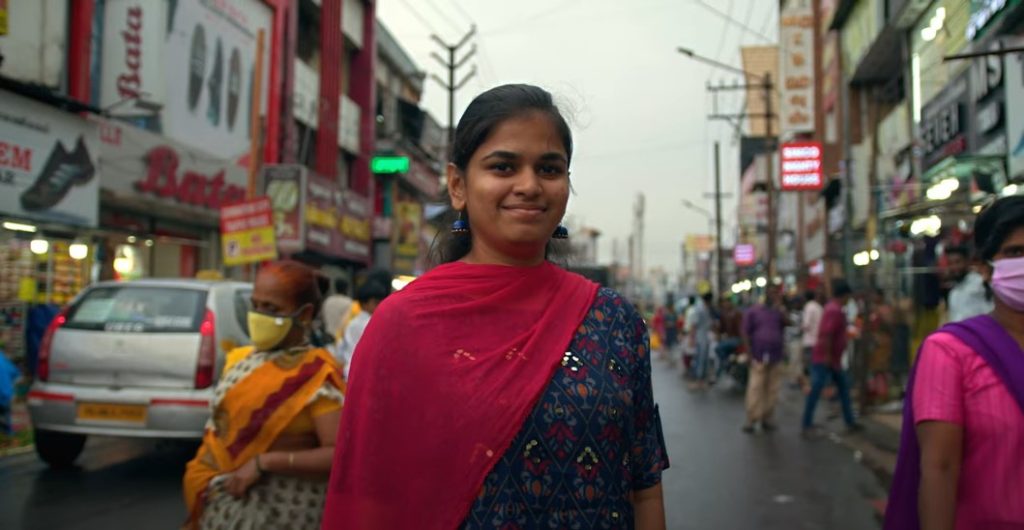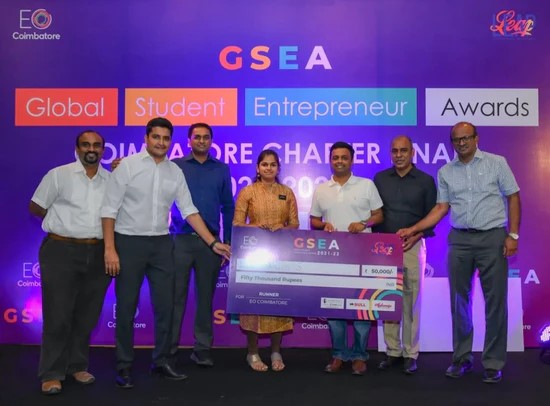(September 20, 2023) “In India, 58.5 million people are entrepreneurs and only 14 percent are women,” says Smrithi, founder, Shika Creations. “I have always wanted to make an impact on society, that’s what puts a smile on my face when I go to sleep at night. When someone tells us that they are leading a better life because of us, I do a little dance,” laughs the mild-mannered entrepreneur, as she breaks into her trademark wide grin. The 23-year-old began making terracotta jewellery back in 2016, when she was only 15. She took the leap into entrepreneurship as a teenager, and founded Shika Creations, which now has a client base around the world, and through which Smrithi has helped women across India have their own livelihoods by training them in the art of making terracotta jewellery. In 2022, she placed third at the Global Student Entrepreneurship Awards. What’s more, as she works to bring innovation into her product, the Global Indian hopes to promote this ancient art, with its rich heritage dating back thousands of years and showcase the relevance of Indian traditions in the modern-day demand for sustainable, eco-friendly fashion.

Smrithi S
Discovering an ancient tradition
Terracotta jewellery has a rich and ancient history in India, tracing its origins all the way back to the Harappan civilisation. Terracotta, which literally means “baked earth” in Italian, is a type of earthenware clay that has been used for thousands of years in India for various purposes, including pottery, sculpture and jewellery. The tradition has continued over the centuries, with jewellery from West Bengal featuring intricate and delicate craftsmanship, while South Indian styles have vivid colours and robust designs.
Smrithi’s first brush with the tradition came when she was in the ninth grade. Always passionate about the arts, she would try and learn something new every year, during her summer break. When she was 14, she attended a two-day workshop on terracotta jewellery making and found she enjoyed the process.” Terracotta is made from natural clay and follows a four-step process. First, it is moulded into the desired shape and the design is created and left to dry. When it is dry, it is brittle and has to be baked, then painted,” she explained. Smrithi continued to practice at home, and learning more about the tradition’s rich history only sparked her passion more. She wondered if she could turn her hobby into a business idea.
Turning a hobby into a business
When she first floated the idea of entrepreneurship to her family, they worried for her. Raised in a fairly typical Tamilian household in Coimbatore, her father, a professor, believed in studying well to earn well, and entrepreneurship was too big of a risk. Smrithi pleaded with her dad, promising to giving up the business if her academics suffered. When she finally had his permission, Smrithi began small and approached a nearby crafts store asking them to stock her handmade terracotta jewellery. Again, the shop owner said she was too young, and didn’t want to risk giving her a chance. She persisted, however, until he said yes.
Everyday, she would head to the store after school, to see if she had managed to sell anything. For weeks, she returned home disappointed. Her parents stood by her, however, and so did her college. “I sit with her everyday when she is working. If she is feeling low, I pull her up a bit,” said Smrithi’s mother proudly, in an interview. “She’s a very responsible entrepreneur and wants to empower women,” her father remarks. “We see her stressed often because balancing education and business is very difficult. But when she makes a plan she gets it done. She’s a very hard worker and I hope that all her dreams come true.”
Learning to thrive
Success did not come overnight and Smriti waited for weeks to see her first sale. “In the beginning I was following the prototype of traditional terracotta designs,” Smrithi explains. “I was also making those products and there were lots of others like me. My products did not stand out and I faced a lot of problems.” One setback, she realised, was in exactly this – seeing terracotta as completely traditional. “I started introducing more modern elements into my work,” she says. “Metal jewellery was fashionable and also kundan stone. So I brought both those elements into my work, I blended metal and terracotta, kundan stone and terracotta.” She even went onto create a full, traditional bridal set using terracotta.
In those early days, her products targetted only women. Smrithi knew she had to widen her customer base to keep her business sustainable. “I branched out into home decor, and started making wind chimes, fridge magnets, wall hangings and caricatures. I would even make customised terracotta portraits of people,” she says. By this time, Smrithi was studying fashion technology at the PSG College of Technology in Coimbatore. When the lockdown was imposed due to the pandemic, Smrithi spent two months building up her stock. Orders had also begun pouring in from around the world – the US, UK, Singapore and Malaysia, apart from different parts of India.
Social impact
Smrithi first understood the social change she could bring about when she was approached by Bosch’s social wing. “They conduct free workshops in villages, so I went to do hands on training for 15 women in rural areas,” Smrithi says. “Now, these women are making jewellery and selling it on Instagram.” During the pandemic, she continued to take lessons on terracotta jewellery making through Google Meet and Zoom.


Building a flourishing business and committing to making a social impact didn’t mean Smrithi let her academic career go to seed. “She maintained a 9.13 CGPA throughout,” said one of her teachers from college. It meant a busy schedule – “College began at 8.30 am and after that, I would come home, take a small nap and begin my day as an entrepreneur,” Smrithi says. She also had to learn business lessons through experience, as nobody in her immediate family came from that background. “But I love arts and crafts and I want to make a social impact. That puts a smile on my face. Also, my parents and sister are pillars of support. Whenever I am down, they give me the courage to move forward.”




